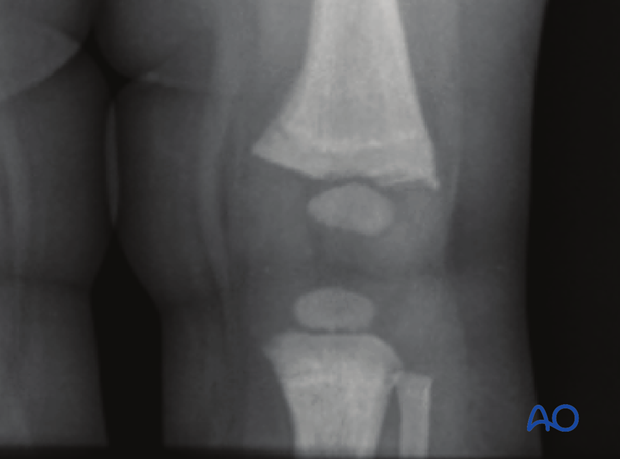33-E/2.1 Epiphysiolysis with metaphyseal wedge, Salter-Harris II, simple
Definition
Simple epiphyseal fractures of the distal femur with a separation of epiphysis and a metaphyseal wedge attached to the epiphyseal fragment (Salter-Harris II) are classified as 33-E/2.1.
The Salter-Harris II fracture is the most common pattern of injury involving the distal femoral growth plate.

Further characteristics
Children struck from the lateral side, common in sports and pedestrian injuries, often have lateral displacement of the distal fragment and valgus angulation.
Hyperextension mechanisms produce anterior displacement of the distal fragment and apex posterior angulation.
Further evaluation
If these fractures are seen in children below walking age child abuse should be suspected.
Metaphyseal “corner” fractures of the left distal femur are seen on this x-ray of an infant who had multiple other injuries consistent with abuse.

X-ray/CT
Case
This 15-year-old boy had marked tenderness at the lateral distal femoral growth plate 5 days after a sports injury. He was able to walk. Subtle widening of the lateral growth plate is seen and there is a fracture line in the medial metaphysis.

CT scan confirms a minimally displaced Salter-Harris II fracture.














